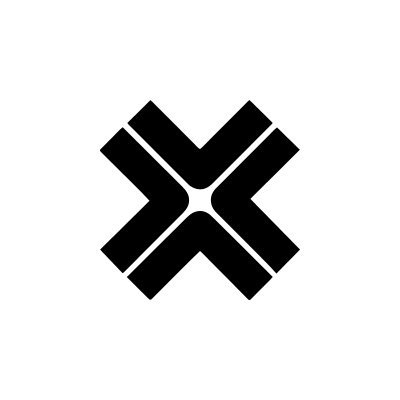Scaling solved fees, now we need to solve fragmentation.
But ETH doesn’t need more bridges, it needs one standard.
ERC-7786 delivers that ⤵️
Scaling via L2s has become Ethereum's biggest problem:
50+ isolated rollups with fragmented liquidity and complex bridges.
Cross-chain solutions exist, but we need standards to unite them.
Here's how interop standards could revitalize ETH:
First, let's understand how we got here.
Ethereum had a scaling problem during the last cycle. Gas fees peaked at $100+ per transaction as users competed for block space.
Layer 2 rollups emerged to fix this issue, and they worked.
Base, Arbitrum, Optimism, and dozens of others successfully expanded Ethereum's capacity, with fees now counted in cents.
But they also created a new problem: Fragmentation.
Users now must navigate between isolated ecosystems that don't talk to each other. The real-world impact is significant. Imagine you have funds on Optimism but want to use an app on Base. You need to:
• Find a bridge
• Pay expensive fees
• Wait for finality periods
• Manage multiple wallets
The user experience is challenging, to say the least. But interoperability standards are currently being developed to unify the Ethereum ecosystem.
Generally, I am not a fan of standards; however, the lack of standards in this situation has resulted in repeated bottlenecks for developers.
Let's break some of them down:
1. The first interop standard on our list is Across and Uniswap's intent standard (ERC-7683).
Intents allow users to express what they want (swap token X on @base
for token Y on @arbitrum), and then "solvers" will compete to fulfill the order in the most optimized path.
Here's how it works:
When you request a cross-chain swap, a decentralized network of "solvers" competes to fulfill your order. They front the liquidity and provide quick fulfillment, while final settlement occurs later via secure cross-chain messaging.
This is fundamentally different from traditional bridges, where:
• You lock tokens in a contract on chain A
• Wait for confirmation (often minutes or hours)
• Then get wrapped tokens on chain B
Intent-based approaches put user experience first, with settlement happening afterward.
The ERC-7683 standard aims to ensure that protocols share information in a consistent language so that any solver in the decentralized network can understand the order and carry it out.
And ERC-7683 isn't the only standard trying to tackle cross-chain fragmentation.
2. There are multiple other standards trying to stitch isolated rollups together.
Here is a brief breakdown:
• RIP-7755: Enables trustless transactions between rollups via a permissionless network of fulfillers.
• RIP-7859: Exposes Layer 1 origin information inside Layer 2 environments, improving cross-chain data verification.
• ERC-7828: Introduces chain-specific addresses in ENS, reducing confusion when sending assets across different chains.
Each of these standards is a step toward solving isolated ecosystems. However they all face the same underlying issue:
We still need a common language for chains to communicate at the base layer. Without that, fragmentation persists.
To truly scale Ethereum's app layer across chains, the above standards and developers need a shared language.
3. That brings us to ERC-7786, a proposed universal interface for messaging between blockchains.
It’s like agreeing on a mailing address format, so that UPS, FedEx, or DHL can all deliver your package.
Proposed by @OpenZeppelin and @interop_labs (the developer of the @axelar Network), ERC-7786 is minimal by design, built to be lightweight and modular. The goal is to reduce vendor lock-in and enable true cross-chain native applications.
ERC-7786 standardizes:
• Message field encoding
• Sending & receiving logic
• Security guarantees
• Optional “attributes” for protocol-specific behavior
The standard is designed to be flexible, so developers can write code once and deploy it across multiple chains (including L2s and non-EVM environments).
"Chain abstraction" remains the ultimate goal:
• Users shouldn't need to know which chain they're on.
• Wallets should work everywhere.
• Assets should be able to move freely.
Right now, capital is inefficiently locked in dozens of bridge contracts. Meanwhile, developers waste time learning multiple proprietary interfaces while users bear the cost of complexity.
Standardization creates a rising tide that lifts all boats.
In the history of technology, open standards consistently accelerate ecosystem growth.
TCP/IP united the internet, HTTP standardized the web, and now, interop standards will reunite Ethereum's ecosystem.

5,704
0
本頁面內容由第三方提供。除非另有說明,OKX 不是所引用文章的作者,也不對此類材料主張任何版權。該內容僅供參考,並不代表 OKX 觀點,不作為任何形式的認可,也不應被視為投資建議或購買或出售數字資產的招攬。在使用生成式人工智能提供摘要或其他信息的情況下,此類人工智能生成的內容可能不準確或不一致。請閱讀鏈接文章,瞭解更多詳情和信息。OKX 不對第三方網站上的內容負責。包含穩定幣、NFTs 等在內的數字資產涉及較高程度的風險,其價值可能會產生較大波動。請根據自身財務狀況,仔細考慮交易或持有數字資產是否適合您。


